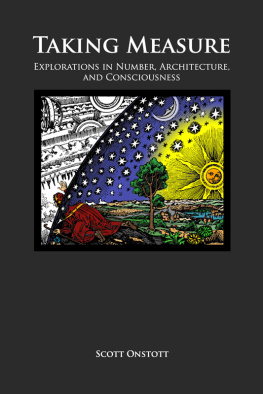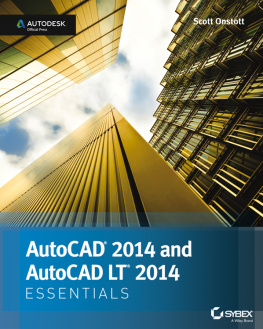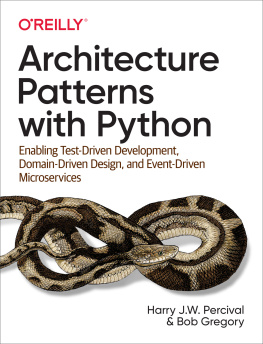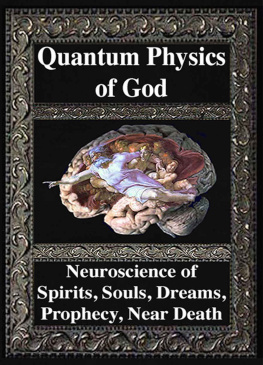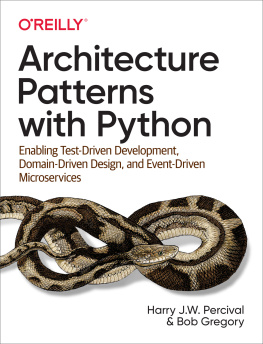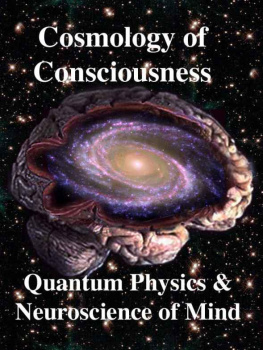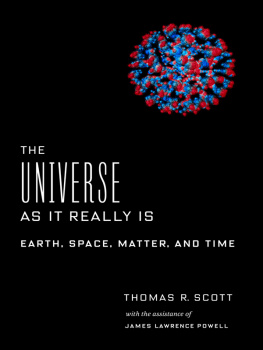Taking Measure
Explorations in Number, Architecture,
and Consciousness
by Scott Onstott
Copyright 2012 SIPS Productions Inc.
All rights reserved.
Contents
I am blessed to have daily contact with fans from all over the world. A warm thank you to all those who email me, post thoughtful comments on my blog, and/or interact with me on Facebook.
I am especially grateful to my wife Jenn Nelson and my friend Ian le Cheminant for their insightful editing of this book.
I began this book as a way of taking measure of my two films, Secrets In Plain Sight Volumes 1 & 2, a series very densely packed with information which runs for more than 5 hours. Many viewers watch the films over and over and have picked up different things on each viewing. This process takes a lot of time and I recognize that people are very busy these days so I wanted to distill into a small book the essentials of what the films have uncovered. The written format encourages depth of analysis and synthesis.
By taking measure of the objective world of things from the quantum to architectural to astronomic scales, I have observed numerical patterns emerging from the scientific data. This book presents numeric codes unfolding in space and time in many unexpected places, from our units of measure to the relationships between celestial bodies. Geometric and numeric encoding is also explored in cities, in architecture, in alignments across the Earth, and in the human body. We start in the exterior objective world and the evidence gradually leads us into the subjective world within.
As I set off writing I didn't realize the extent to which this book would clarify my own thinking and take my awareness in new directions but that was the end result. I hope that by reading this book you will enjoy the journey and the expanded perspectives as much as I do.
Scott Onstott
Cortes Island, British Columbia, Canada
November 2012
The decimal system is used throughout the world today. As children we learned that the string of digits 1111 means one thousand plus one hundred plus ten plus one. The place a digit occupies in a number encodes its order of magnitude.
The numeral base is so much a part of our subconscious minds that few people are aware that the decimal system is known formally as base ten, let alone take the time to ponder the possibility of using other numeral bases.
The Mayans used base twenty (called vigesimal) and the Babylonians used base sixty (called sexagesimal) which we still employ to measure time.
You probably already know that computers process nothing but ones and zeros. Using only 1 and 0 is known as base two. Binary digits double in value in each place; the first place represents 1, the second place represents 2, the third place represents 4, the fourth place represents 8, and so on. The binary number 1111 therefore encodes 8+4+2+1 or the decimal number 15. The transistor, which is really just a very tiny electronic door, can either be open or closed, represented by 1 or 0. Base two is therefore the most efficient choice to represent binary electronic states.
Web designers know that color is efficiently expressed using hexadecimal codes, which are base 16. In hexadecimal, letters A-F are used in addition to the Arabic numerals 1-9 in order to complete the full complement of the fifteen required digits plus zero.
The base is always one unit higher than the number of possible digits used, precisely because of the magic of zero. Nothingness is a strange magic because strictly speaking zero doesn't really exist even though for practical purposes it is commonly considered to be a digit. How can nothing be something? Zero is simply a place holder, an emptiness. In base ten the number 10 encodes one ten and no ones. We need the zero so that 1 can be recognized as being in the second place. The place assigns the digit 1 the quantity of ten. Without the invention of zero we would be hard-pressed to calculate anything. What is DCLXVI times DLV in Roman numerals?
Zero was a great invention and base ten is just an arbitrary convention allowing us to get on with buying and selling, so what of it?
This chapter aims to show why the choice of base ten is anything but arbitrary because the decimal system literally underlies the structure of physical reality.
Many people assume we use base ten because we have ten digits on our hands (counting fingers and thumbs as equal digits). However this assumption is flawed. Follow the assumption to its logical conclusion: with ten digits we should be using base eleven. Remember the base has to be one numeral higher than the full complement of digits because we must also account for the placeholder zero.
Which one of your fingers is your zeroth digit? Kids don't start counting fingers with zero and if you do start counting with 1 you shouldn't end with 10 either because 10 presupposes the complex concept of place and the void (0) to hold the ones place open. If you were designing a numeral system based on your hands then you wouldn't stop on your last little finger and have to go into abstract philosophical explanations with an appeal to nothingness to name it. You might symbolize it with an X like the Romans did and be done with it. The concept of zero didn't occur to the Romans (we have 9th century India to thank for zero).
However, ever since Fibonacci, we in the West are quite familiar with the magic of zero and therefore when we count our fingers we call our last little finger number 10 without thinking much of it. However, if the decimal system isn't based on our hands then what is its basis?
To answer this fundamental question I turn to the research of Dr. Peter Plichta, who holds a PhD in physics and another in chemistry. In his book God's Secret Formula: Deciphering the Riddle of the Universe and the Prime Number Code (Element 1997) he realized the significance of there being exactly 81 stable atoms in the universe.
The periodic table of the elements shows atomic numbers higher than 83 as subject to radioactive decay. In addition, elements 43 (Technetium) and 61 (Promethium) also radioactively decay. In time all radioactive elements split into one or more of the 81 stable elements. Plichta asked himself, why should precisely 81 stable elements exist, no more, and no less?
Plichta found the answer in the reciprocal of 81.
1/81 = .0123456789(10)(11)(12)(13)...
The reciprocal of 81 is a sequence of all whole numbers after the decimal point. Whole numbers higher than 9 are shown in parentheses because no numeral higher than 9 can exist in the decimal place system. Converting this infinite string of numbers into the decimal system yields the infinitely recurring number:
0.01234567912345679...
In other words the digit 8 is always missing from the pattern. To convince yourself of the veracity of this fact consider that 1/81 = 1/9 x 1/9. One ninth equals 0.111111... Multiplying a string of ones times a string of ones yields a sub-total of one in every place. Adding up columns of sequentially increasing ones logically results in a string of numbers from the void all the way to infinity. When these numbers are put into the decimal system, the numbers higher than 9 are carried into adjacent places, and the digit 8 somewhat mysteriously disappears from the answer.
A similar symmetry can be seen in the fact that 12345679 x 9 = 111,111,111.
You can also think of 81 as a poetic metaphor for infinite one; what is the numeral 8 but the infinity symbol turned on its side?
In ancient Heliopolis (today a district of modern Cairo) the Egyptians venerated a pantheon of 9 gods that the Greeks called the ennead, meaning a collection of nine things. I think the ennead, among many other layers of meaning, was intended to be an analogy for the decimal system. For more than two thousand years until the first millennium BC the Egyptians used hieroglyphic numerals that were based on a decimal system.

